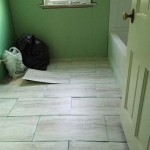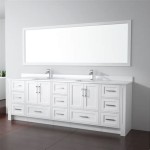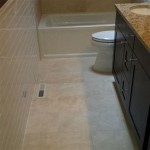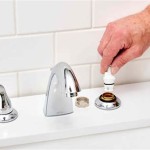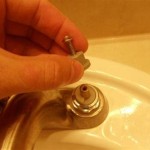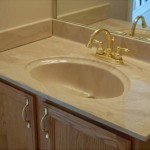```html
Understanding Under Bathroom Vanity Shelves: Functionality and Design
Under bathroom vanity shelves represent a frequently overlooked, yet critically important, element in bathroom organization and design. These shelves maximize storage space within the confines of the vanity cabinet, effectively transforming otherwise wasted areas into functional storage solutions. This article explores the various aspects of under-bathroom-vanity shelves, including their types, materials, installation considerations, and design implications.
Types of Under Bathroom Vanity Shelves
The market offers a wide variety of under-bathroom-vanity shelf types, each designed to address specific storage needs and vanity configurations. Understanding these different types allows for informed decisions when selecting the most appropriate shelving solution.
Fixed Shelves: These are the most basic and common type of under-vanity shelf. They are permanently installed within the vanity cabinet, typically constructed from wood, particleboard, or laminate. Fixed shelves offer stable and reliable storage for a variety of items. The primary advantage of fixed shelves is their simplicity and cost-effectiveness; however, their lack of adjustability can be a limiting factor if storage requirements change.
Adjustable Shelves: Adjustable shelves provide greater flexibility in organizing under-vanity storage. These shelves can be repositioned vertically within the cabinet using pre-drilled holes or shelf supports. This adjustability allows users to customize shelf height to accommodate items of various sizes, optimizing space utilization. Adjustable shelves are typically constructed from wood, particleboard, or glass, and are held in place by shelf pins or clips.
Pull-Out Shelves: Also known as sliding shelves, pull-out shelves offer enhanced accessibility to stored items. These shelves are mounted on sliding mechanisms, allowing them to be extended outwards from the cabinet. This design is particularly useful for storing items that are difficult to reach at the back of the cabinet. Pull-out shelves are often made from wire, metal, or wood, and may incorporate features such as soft-close mechanisms for smooth and quiet operation. This type of shelf can improve efficiency and reduce strain when accessing regularly used items.
Tiered Shelves: Tiered shelves provide multiple levels of storage within a single unit. These shelves are arranged in a stepped configuration, allowing for better visibility and organization of smaller items. Tiered shelves are commonly used to store toiletries, cosmetics, and cleaning supplies. They are often constructed from plastic, metal, or wood, and can be free-standing or mounted to the cabinet walls. The tiered design maximizes vertical space and prevents items from being hidden behind one another.
Corner Shelves: Corner shelves are designed to utilize the often-overlooked corner space within a vanity cabinet. These shelves are typically shaped to fit snugly into the corner, maximizing storage potential. Corner shelves can be fixed, adjustable, or pull-out, depending on the specific design and storage needs. They are particularly useful in L-shaped or U-shaped vanity configurations.
Materials Used in Under Bathroom Vanity Shelves
The materials used in the construction of under-bathroom-vanity shelves significantly impact their durability, appearance, and resistance to moisture. Selecting the appropriate material is crucial for ensuring the longevity and functionality of the shelving.
Wood: Solid wood provides a classic and durable option for under-vanity shelves. Wood shelves offer a natural aesthetic and can be stained or painted to match the vanity cabinet. However, solid wood is susceptible to moisture damage and may require sealing or treatment to prevent warping or decay. Hardwoods like maple, oak, and cherry are common choices for their strength and durability.
Particleboard: Particleboard is a cost-effective alternative to solid wood. It is made from compressed wood chips and resin, and is often covered with a laminate or veneer. Particleboard shelves are generally less expensive than solid wood, but they are also less resistant to moisture damage. It's critical to protect the edges and surfaces from water exposure to prevent swelling and deterioration.
Laminate: Laminate is a thin layer of plastic or paper that is bonded to a core material, such as particleboard or MDF (medium-density fiberboard). Laminate shelves are available in a wide range of colors, patterns, and textures, offering versatility in design. They are relatively resistant to scratches and stains, but can be susceptible to moisture damage at the edges or seams. Laminate surfaces are easy to clean and maintain.
Metal: Metal shelving, particularly wire shelving, is a durable and lightweight option for under-vanity storage. Metal shelves are resistant to moisture and easy to clean, making them suitable for storing potentially wet or messy items. Wire shelving allows for good air circulation, which can help prevent mildew growth. Metal shelves are available in various finishes, such as chrome, stainless steel, or powder-coated colors.
Plastic: Plastic shelves are a lightweight and affordable option for under-vanity storage. Plastic is highly resistant to moisture and easy to clean, making it suitable for storing toiletries and cleaning supplies. Plastic shelves are available in various colors and designs, and are often used for tiered shelves and organizers. However, plastic shelves may not be as durable as wood or metal options.
Glass: Glass shelves offer a sleek and modern aesthetic for under-vanity storage. Glass shelves are easy to clean and resistant to moisture, but they can be more fragile than other materials. Tempered glass is a safer option, as it is less likely to shatter into sharp pieces if broken. Glass shelves are often used in combination with metal supports to create a stylish and functional storage solution. They are visually appealing and can enhance the overall design of the bathroom.
Installation Considerations for Under Bathroom Vanity Shelves
Proper installation is essential for ensuring the stability and functionality of under-bathroom-vanity shelves. Several factors should be considered during the installation process, including cabinet dimensions, wall support, and shelf placement.
Measuring and Planning: Before installing any shelves, accurately measure the interior dimensions of the vanity cabinet. Determine the desired shelf placement and spacing based on the items to be stored. Consider the height and depth of the items to ensure that the shelves are adequately sized. A detailed plan will prevent wasted time and resources.
Cabinet Material and Support: The material of the vanity cabinet walls will impact the type of hardware required for installation. For cabinets made from solid wood, screws can be directly driven into the wood. For cabinets made from particleboard or MDF, pilot holes should be drilled to prevent splitting the material. Wall anchors may be necessary if the shelves will be supporting heavy items. Ensure the cabinet is securely mounted to the wall before installing shelves.
Shelf Supports and Hardware: Select appropriate shelf supports and hardware based on the weight capacity and material of the shelves. Shelf pins, brackets, or cleats can be used to support fixed or adjustable shelves. Pull-out shelves require sliding mechanisms that are specifically designed for the weight and dimensions of the shelves. Use high-quality hardware to ensure the long-term stability of the shelves.
Leveling and Alignment: Ensure that the shelves are level and properly aligned during installation. Use a level to check the horizontal alignment of the shelves, and adjust as necessary. Misaligned shelves can be unsightly and may not provide stable storage. Take the time to carefully align each shelf to ensure a professional and functional installation.
Moisture Protection: Given the humid environment of bathrooms, moisture protection is crucial for preserving the longevity of under-vanity shelves. Seal any exposed edges of wood or particleboard shelves with waterproof sealant to prevent water damage. Consider using moisture-resistant materials, such as plastic or metal, in areas prone to excessive moisture. Proper ventilation within the cabinet can also help reduce humidity levels.
Accessibility and Ergonomics: Consider the accessibility and ergonomics of the shelves during installation. Ensure that the shelves are positioned at a comfortable height for accessing stored items. Pull-out shelves can improve accessibility for items stored at the back of the cabinet. Think about the frequency with which items will be used and position them accordingly.
By carefully considering these installation factors, users can create functional and durable under-bathroom-vanity storage solutions. Proper planning and execution are essential for maximizing space utilization and ensuring the longevity of the shelving system.
```
35 Genius Small Bathroom Storage Ideas Organization

15 Examples Of Bathroom Vanities That Have Open Shelving

How To Build A Bathroom Vanity Sliding Shelf Interior Frugalista

31 Bathroom Storage Ideas That Are Serious Game Changers Interior Solutions Vanity Designs

Best 17 Under Sink Organizer In 2024 Our Favorite Finds

Bathroom Vanity Idea An Open Shelf Below The Countertop 17 Pictures

Under Sink Storage Ideas For Your Home Designcafe

S Small Bathroom Storage Pedestal Sink Shelf

Adding Shelves In Bathroom Cabinets Gray House Studio

Bathroom Vanity Shelves
Related Posts
